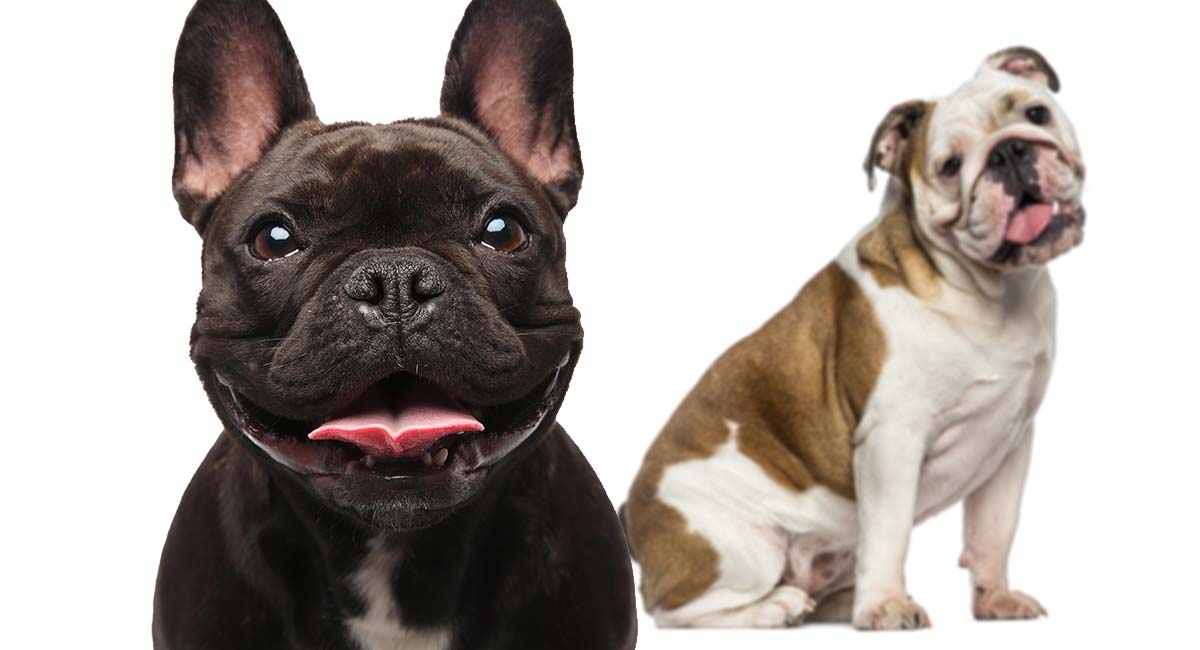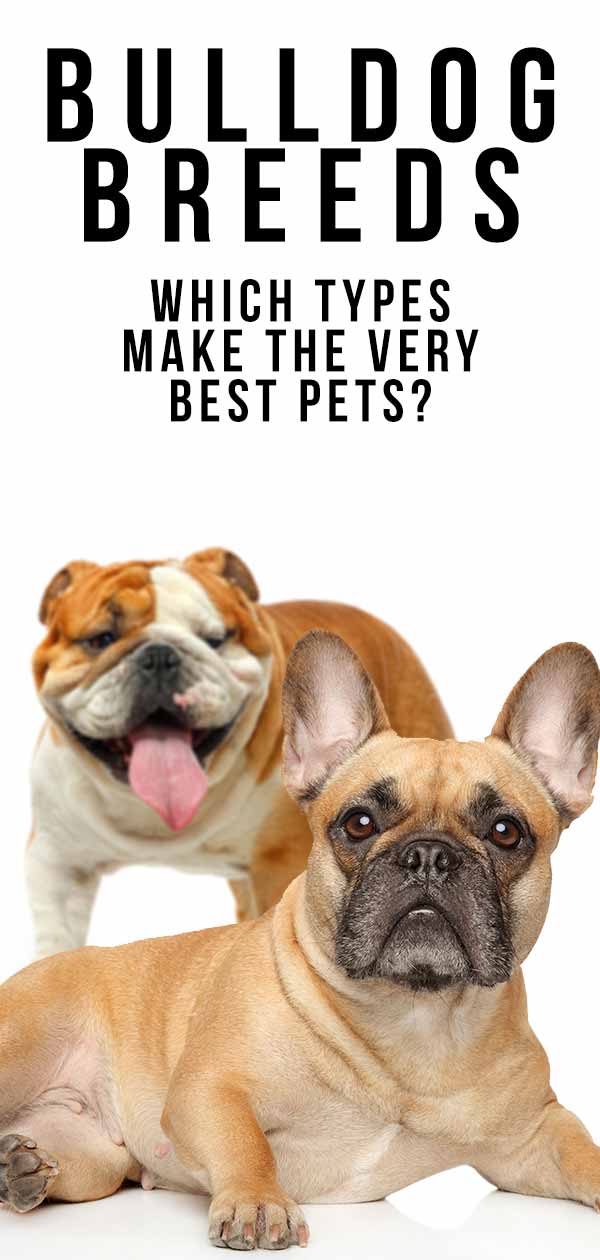[ad_1]
Bulldog breeds include some compact, bold, confident, affectionate and loyal dogs. Bred historically for bull baiting by their Elizabethan owners, the different types of Bulldogs have come a long way. They now make loving, smart and friendly family pets. The American Bulldog, English Bulldog, French Bulldog, Catahoula Bulldog and Spanish Bulldog are all members of this group, and many have Mastiff ancestors.
Contents
Bulldogs, especially the popular English and French Bulldogs, are endearing and adorable, but are they the right choice for everyone? They are popular lapdogs and apartment pets despite their often larger size. And even steal the hearts of kids, other dogs and strangers alike. But they do come with some health problems too.
Bulldog Breeds
Not all Bulldog breeds are officially recognized by dog breed organizations like the American Kennel Club. Some are recognized by alternative dog breed groups and some are mixed breed Bulldog crosses.
English Bulldog Breed
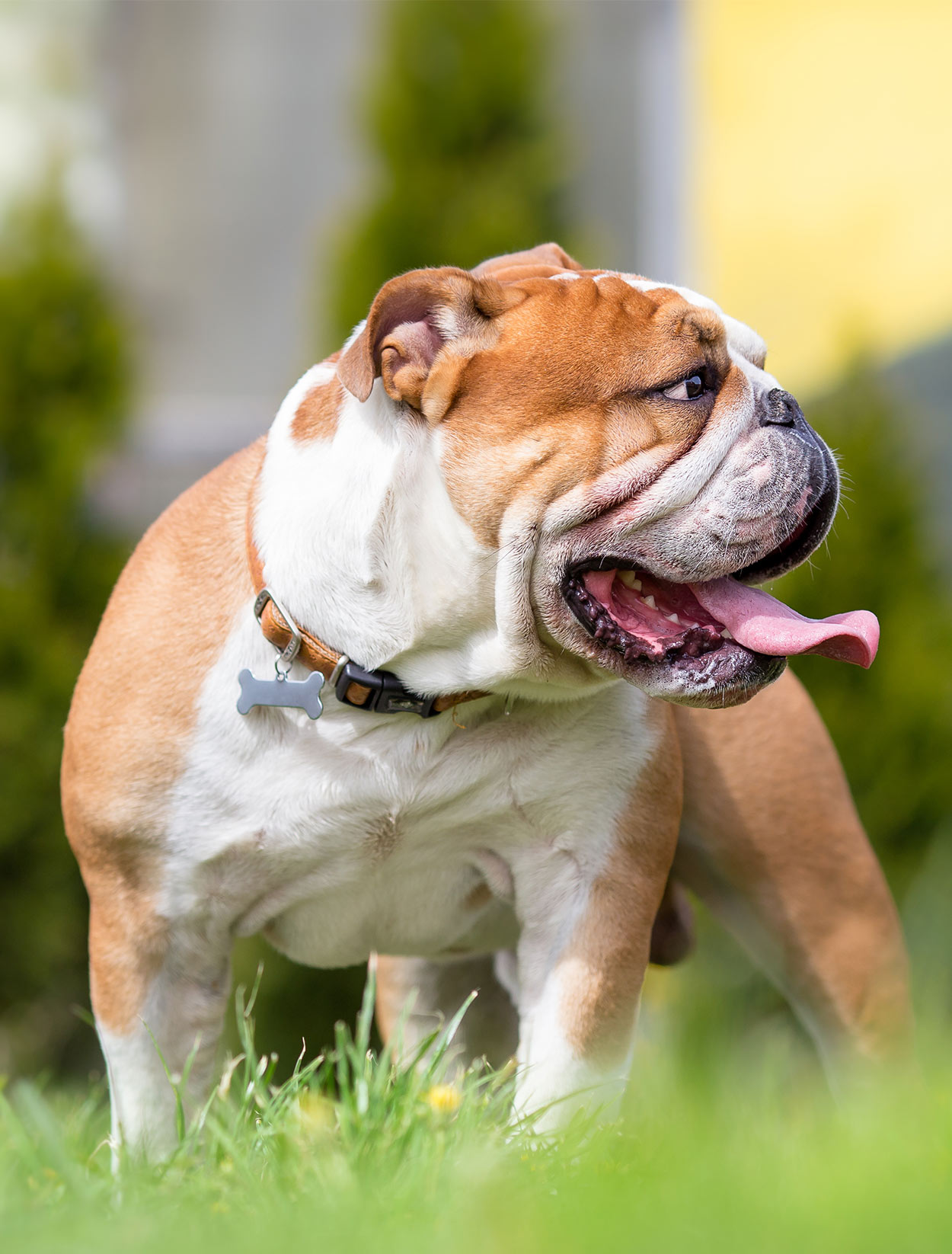
The English Bulldog is what most people visualize when they think of Bulldogs. The modern English Bulldog combines that iconic physical appearance with a famously friendly, docile, and loyal temperament.
American Bulldog Breed
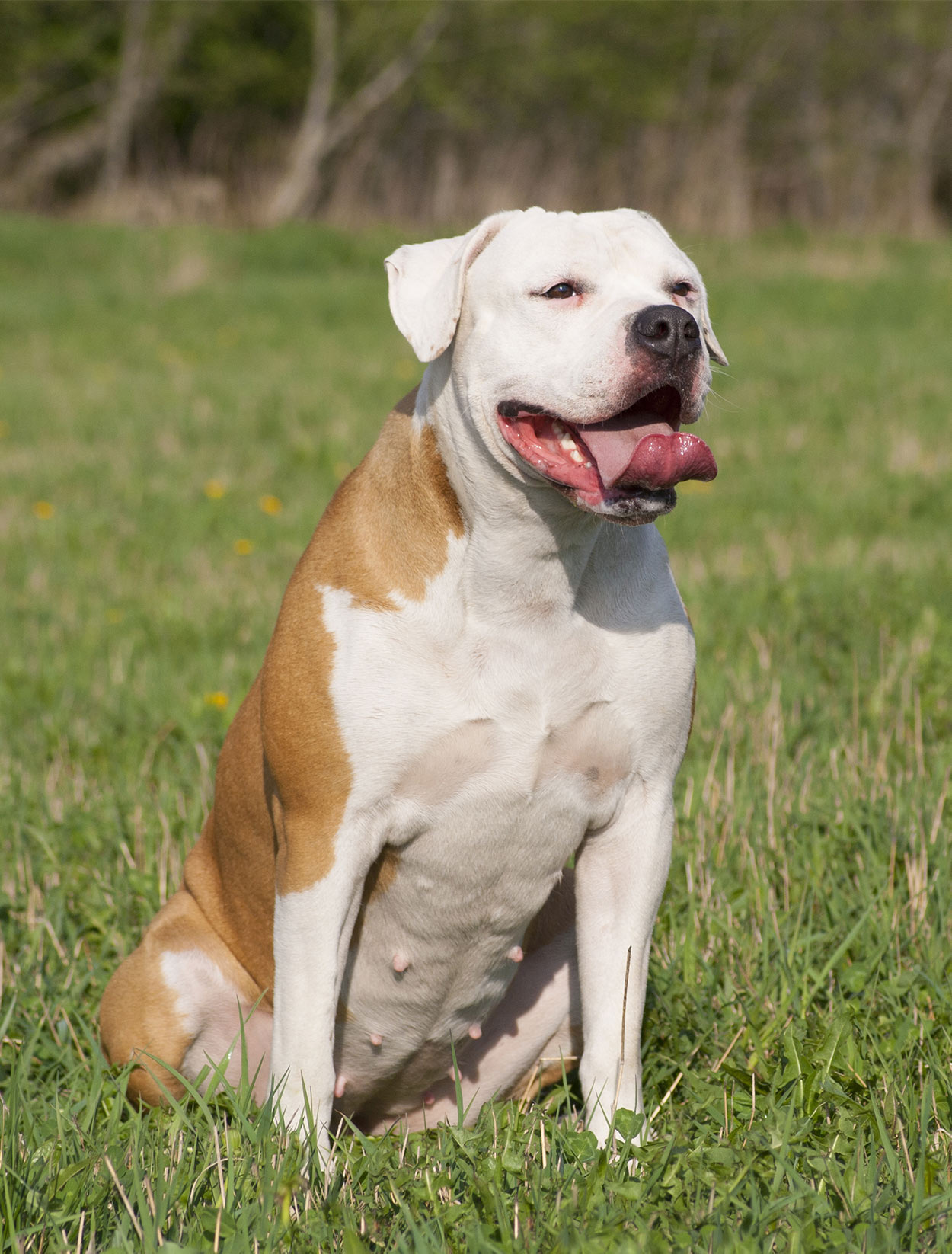
The American Bulldog is as close as you’re likely to get to the original English Bulldog.
The old-style English Bulldog was brought to the American colonies in the 17th century. It has retained its original appearance, living and working alongside farmers, ranchers, and hunters in the rural South.
The Bully is heavier and stockier than the Standard. The head shape of the Bully is large and round, with an undershot jaw. The Standard’s head is sleeker, with a boxy or wedge shape, and a less undershot jaw.
Potential owners concerned about the health effects of brachycephaly should consider the Scott type American Bulldog, with its longer muzzle.
Like many other dog breeds, the American Bulldog can suffer from hip and elbow dysplasia, so be sure to choose a reputable breeder who health tests their dogs.
French Bulldog Breed
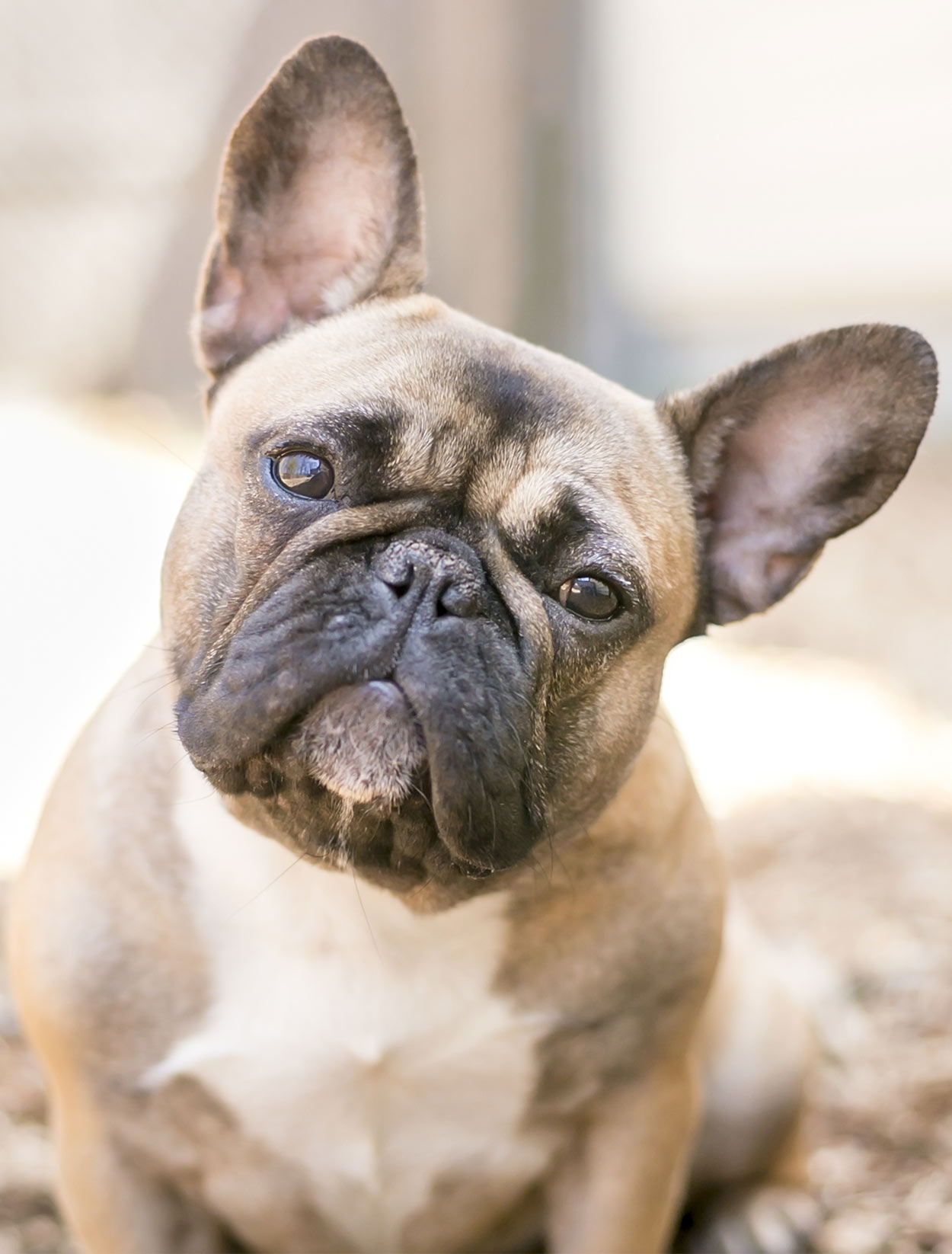
The cute French Bulldog breed has its origins in a toy version of the English Bulldog popular in the 1800’s. The breed made its way from England to France, where it was crossed with other small dogs like the Pug. It became a popular companion animal for city dwellers in France, and eventually in the U.S. and other parts of the world.
The French Bulldog is known for its compact body and large head, topped by wide “bat” ears. The physical structure of the Frenchie makes natural reproduction and birth difficult. A large number are artificially inseminated and delivered via Cesarean section.
The French Bulldog is a brachycephalic breed prone to respiratory problems and is also prone to the spinal deformity called hemivertebrae. Additionally, because the Frenchie is also a dwarf (chondrodystrophic) toy breed, it can suffer from health problems related to its short, curved legs and back.
While adorable, the Frenchie can require a significant amount of costly veterinary care because of the many health problems associated with the breed. Potential owners are urged to resist purchasing them on impulse and to thoroughly understand the special needs of this breed before deciding on a Frenchie.
Boxer Dog Breed
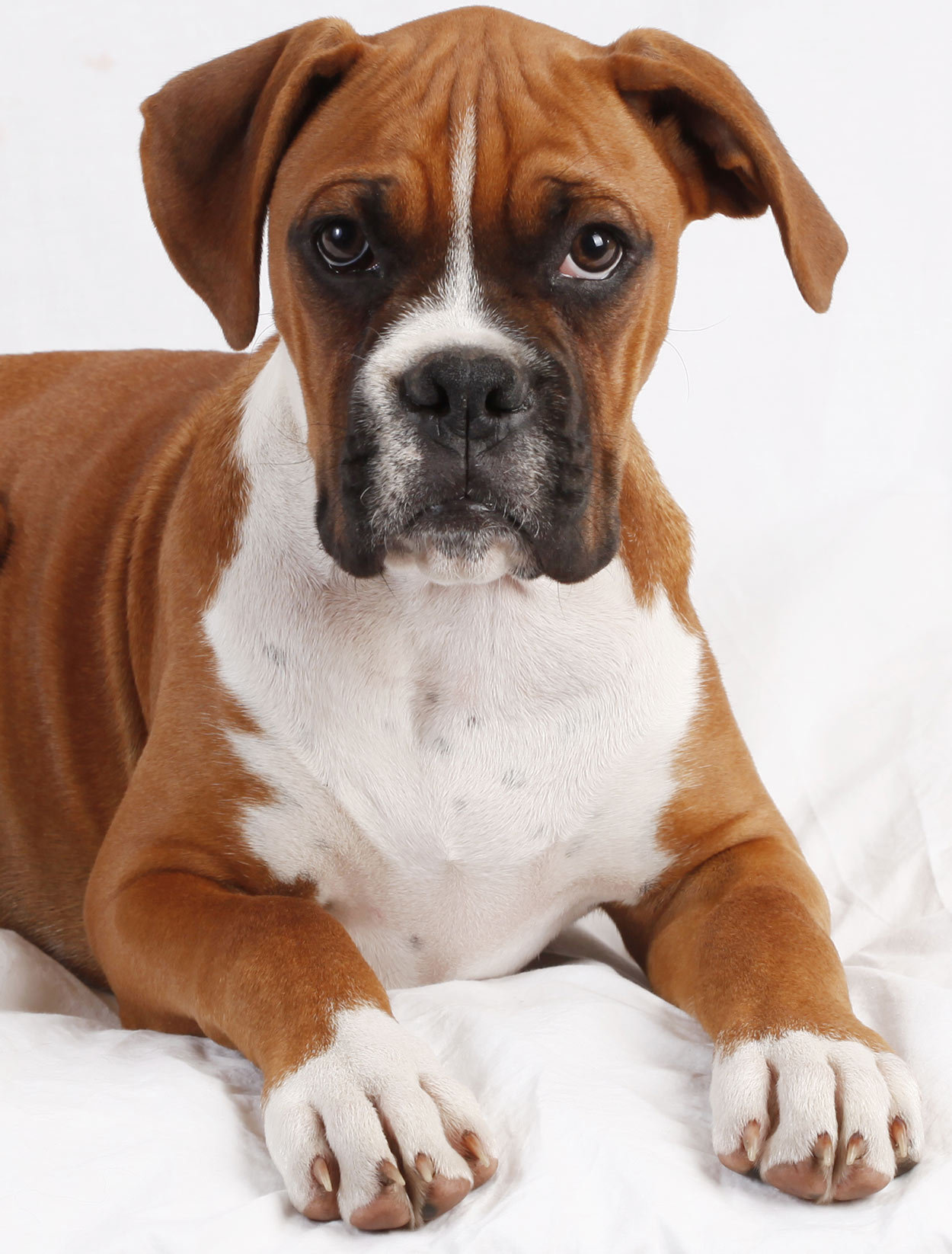
The Boxer is descended from an ancient type of dog known as the Bullenbeisser, which was crossed with the older style English Bulldog to create the Boxer dog breed. While the Boxer doesn’t have the word Bulldog in its name, its founding breeds were Bulldogs, and the Boxer certainly deserves to be on any Bulldog breeds list.
The Boxer is a good option for potential owners seeking a Bulldog-type dog that has a lower risk for health problems associated with brachycephaly. The Boxer’s muzzle is blunt and broad, but not as flat as other Bulldog breeds. The lower jaw is undershot but not as extreme as an English Bulldog’s.
The Boxer is classified as a brachycephalic dog, so potential owners should be aware that there is some risk for breathing difficulties, even though the head shape is less extreme than other brachycephalic breeds. In addition to BOAS, Boxers can be prone to other health problems like heart disease, cancer, and hip dysplasia.
Spanish Bulldog Breed
One of the less well-known Bulldog breeds is the Spanish Bulldog, also known as the Alano Español. Fans of big Bulldog breeds will appreciate this majestic dog, as it has been called the largest Bulldog breed.
This breed is a native Spanish Molosser-type dog. Bulldogs are classified as Molossers, as are many other breeds like Mastiffs, Rottweilers, Great Danes, and Anatolian Shepherds. The Alano Español was used in bull baiting, as well as for hunting, guarding, and livestock management.
Catahoula Bulldog Breed
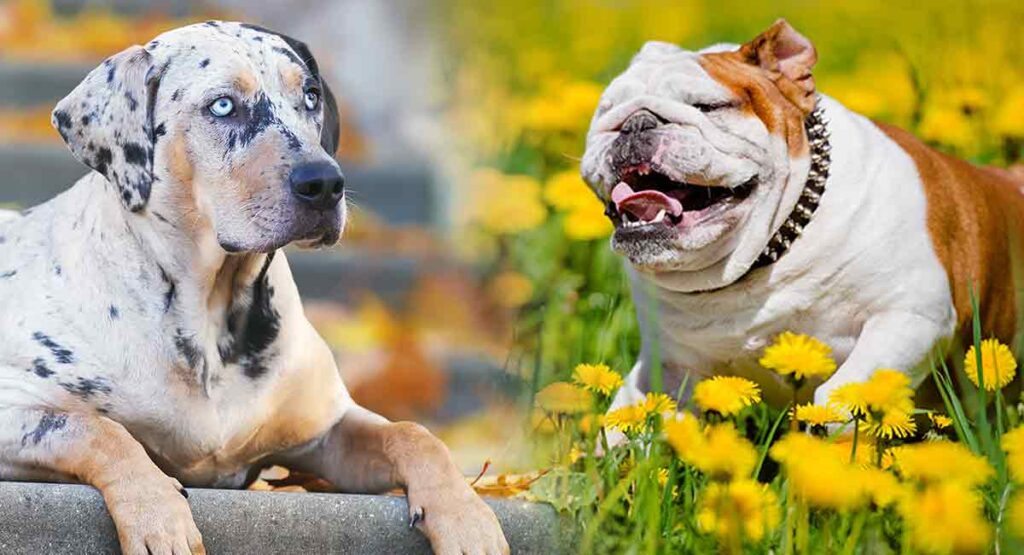
The Catahoula Bulldog is a cross between the American Bulldog and the Catahoula Leopard Dog. This all-American mixed breed is not recognized by the major dog breed organizations but can be a great option for Bulldog lovers seeking a healthy and less brachycephalic Bulldog-type pet.
They have been used for herding, hog catching, and hunting. It is known as a working cross breed, created for utilitarian purposes rather than fashion. As a mixed breed, it may be less prone to issues related to brachycephaly, depending on the physical characteristics inherited from its Bulldog ancestors.
The History of the Bulldog
The Bulldog is a type of dog that was originally bred for a blood sport of the Elizabethan era called bull baiting. A similar sport called bear baiting was also very popular. A bull or a bear would be chained to a stake in a pit and then set upon by a group of large dogs. The battles between the animals would continue, often until the deaths of some of the dogs.
Needless to say, this was an extremely gruesome spectacle. Thankfully, these animal fights were officially banned in England by the early 1800’s. By then, the Bulldog and Mastiff breeds developed for these baiting sports were already long established.
Bulldogs were bred for their strong, stocky bodies and large heads and mouths. They were also bred for aggression before bull and bear baiting were banned. Their temperament became milder in the years after blood sports were outlawed, and the breed was used to work with livestock or as a guardian dog.
The English Bulldog always had a stocky build and flat muzzle, but over the years its appearance has gotten much more extreme. The breed has evolved over time, and has also branched off into other types of Bulldogs like the Boxer and the American Bulldog.
Bulldog Breed Health
Many of the Bulldog’s health problems are due to the flatness of the dog’s face, a problem shared by other breeds with similar facial features, such as the Pug.
The term for short head is brachycephaly. Brachycephaly leads to impaired breathing, which can cause chronic and debilitating health effects over a dog’s lifetime.
Brachycephalic dogs have restricted airways. However, this is not just a problem in the shortened nose. It also causes trouble in the mouth and throat because soft tissues like the tongue and palate remain large even when the skull is flattened.
Dogs suffering from BOAS experience many problems, including shortness of breath, difficulty exercising, heat stroke, gagging/vomiting, and low blood oxygen levels which can lead to collapse.
Many different dog breeds can show symptoms of BOAS. Albeit breeds with the shortest muzzles and widest necks experience the most severe problems. This means that the different bulldog breeds are prime candidates for these problems.
Studies have shown that the English Bulldog, French Bulldog, and Pug breeds are at the highest risk for BOAS. Breeds with longer muzzles like the Staffordshire Bull Terrier have a lower risk for BOAS.

Dental Problems
The craniofacial structure of dogs with brachycephaly also causes them to suffer from a wide range of dental problems. Because the upper jaw is shorter than the lower jaw in English Bulldogs and other brachycephalic breeds, the upper teeth rub against the lower teeth and bottom of the mouth.
Curly Tails
Hemivertebrae is a spinal abnormality seen in dog breeds with flat faces and screw tails. This condition is especially common in the French Bulldog.
Dogs with hemivertebrae have malformed spinal bones, which can cause spinal deformity, pain, loss of function in the hind legs, and incontinence.
Dogs that inherit a coiled tail also inherit the spinal deformities that go along with it. Serious cases require major spinal surgery, which is not always successful, and affected dogs can become permanently paralyzed.
Because puppies are born with this condition, the symptoms can appear early, often as young as 7 months of age. Symptoms can appear suddenly, often in just a few hours.
Eye Issues
Dogs with large eyes and brachycephaly can be prone to corneal ulcers. Veterinary experts report that brachycephalic facial and eyelid structure can lead to eye trauma, ulcers, and possibly blindness. Risk factors for corneal ulcers include prominent eyes, visible white of the eye, and folds of skin over the nose.
All these physical features combine to make eye injury and ulcers more likely in Bulldogs and other breeds such as Pugs, Shih Tzus, and Pekingese.
[ad_2]
Source by [author_name]

